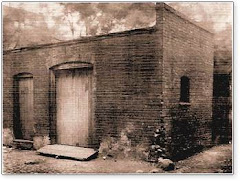
(http://graphics8.nytimes.com/images/2008/09/17/business/17aig01-190.jpg)
Bailouts, buyouts, takeovers of financial services companies in US and Europe since July 2007 (when subprime mortgage crisis began) -
July 2007 - IKN Deutsche Industriebank ($79 Billion), Sept. 2007 - Northern Rock ($216.8 B); Dec. 12, 2007 - Central banks in US, EU, Canada, Switzerland announced plan to provide at least $90 B in short-term financing to banks; Dec. 18, 2007 - European Central Bank injected $500 B into financial system; Jan. 2008 - Countrywide Financial ($172.1 B); March 7, 2008 - Federal Reserve offered $200 B in 28-day loans to investment banks, big financial institutions; March 11, 2008 - Federal Reserve offered $200 B in Treasury securities to investment banks in exchange for mortgage-backed securities; March 17, 2008 - Bear Stearns ($399 B); March 21, 2008 - European Central bank offered $24 B in loans to help banks strengthen balance sheets; Bank of England offered $10 B in loans; April 2008 - Dusseldorfer Hypothekenbank ($42.5 B); July 2008 - IndyMac Bancorp ($32.3 B); Alliance & Leicester ($153.4 B); Aug. 2008 - Roskilde Bank ($7.9 B); Sept. 7, 2008 - Freddie Mac ($879 B), Fannie Mae ($885.9 B); Sept. 14, 2008 - Merrill Lynch ($966.2 B); Sept. 15, 2008 - Lehman Brothers ($639.4 B); Sept. 16, 2008 -AIG ($1,049.9 B); Sept. 18, 2008 - HBOS ($1,356.5 B); Federal Reserve, European Central Bank, Bank of England, Bank of Japan, central banks in Switzerland and Canada made $180 B available in currency swaps; September 22, 2008 - Goldman Sachs Group nd Morgan Stanley converted to traditional bank holding companies; Sept. 26, 2008 - Washington Mutual ($309.7 B); Sept. 29-30, 2008 - Fortis ($1,533.2 B), Wachovia ($812.4 B), Hypo Real Estate ($622.2 B), Bradford & Bingley ($104 B), Gilitnir ($48.9 B), Dexia ($913 B)
October 2008 - Return to 1932 Structure: Commercial banks and Small finance boutiques (Meet the new Goldman Sachs, Kidder Peabodys, Kuhn Loebs, Morgan Stanleys -

October 3, 2008 - President Bush signed Troubled Asset Relief Program, $700 billion program to buy illiquid debt, backed by home loans, on bank balance sheets, free flow of credit to companies and consumers.
History of U.S. Government Bailouts - Chronological Order, Cost in 2008 Dollars 
(Source: ProPublica, independent, non-profit newsroom that produces investigative journalism in the public interest; http://www.propublica.org/images/articles/bailout_balloons4.gif);
Left to Right (actual $/ 2008 $) - June 1970 - Penn Central Railroad ($676.3 million in loan guarantees/ $3.2 billion); August 1971 - Lockheed (Emergency Loan Guarantee Act, $112.22 million/ $1.4 billion); 1974 - Franklin National Bank ($1.75 billion/$7.7 billion); 1975 - New York City (New York City Seasonal Financing Act, $2.3 billion /$9.4 billion); 1979 - Chrysler (Chrysler Loan Guarantee Act, $1.5 billion in loans/$3.9 billion; 1984- reported $1.7 billion in profits for second quarter, government profit of more than $660 million from bailout investment.); 1984 - Continental Illinois Bank ($9.5 billion); 1989 - Savings & Loans (Financial Institutions Reform Recovery and Enforcement Act, about $220.32 billion; taxpayers responsible for about $178.56 billion, balance covered by private sector); 2001 - Airlines (Air Transportation Safety and Stabilization Act, $5 billion in compensation, additional $10 billion in loan guarantees or other federal credit instruments/ $18.6 billion); March 2008 - Bear Stearns ($30 billion); September 2008 - Fannie Mae/Freddie Mac (U.S. government seized control, $200 billion); September 2008 - American International Group (AIG) - $85 billion; September 2008 - Autos (Congress approved more than $630 billion spending bill, $25 billion for auto industry); October 2008 - Wall Street (Troubled Asset Relief Program, $700 billion).

(http://bigcharts.marketwatch.com/charts/big.chart?symb=%2Edji&compidx=aaaaa%3A0&ma=0&maval=9&uf=0&lf=1&lf2=0&lf3=0&type=2&size=2&state= 8&sid=1643&style=320&time=8&freq=1&nosettings=1&rand=9800&mocktick=1)
Famous Unheeded Words on Derivatives:
Warren E. Buffett presciently observed five years ago that derivatives were "financial weapons of mass destruction, carrying dangers that, while now latent, are potentially lethal."
Felix G. Rohatyn, the investment banker who saved New York from financial catastrophe in the 1970s, described derivatives as potential "hydrogen bombs."
George Soros, the prominent financier, avoids using the financial contracts known as derivatives "because we don’t really understand how they work."

No comments:
Post a Comment